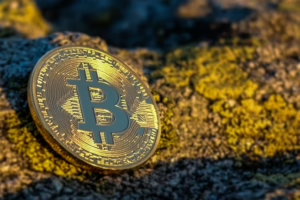The Nature of Prejudice: Why We Judge Before Knowing
Introduction
Prejudice is an ingrained aspect of human behavior, often manifesting in the form of judgment without sufficient understanding or knowledge. It permeates various societal layers, shaping interpersonal dynamics and influencing systemic structures. This article explores the nature of prejudice, its psychological underpinnings, societal implications, and potential pathways toward overcoming it.
Understanding Prejudice
Definition and Types of Prejudice
Prejudice typically refers to preconceived opinions or attitudes about individuals or groups, often based on characteristics such as race, gender, age, or socio-economic status. It can manifest in several forms:
- Racial Prejudice: Negative attitudes toward individuals based on their race or ethnicity.
- Gender Prejudice: Stereotypes and biases related to gender roles.
- Ageism: Discrimination based on an individual’s age.
- Religious Prejudice: Intolerance or discrimination against individuals of certain faiths.
- Classism: Negative attitudes towards individuals from different socio-economic backgrounds.
Psychological Mechanisms
Cognitive Biases
Cognitive psychology provides insights into why we develop prejudices. Cognitive biases, such as the halo effect and in-group bias, play significant roles.
- Halo Effect: This bias leads us to assume that if someone possesses one positive attribute, they likely have others. Conversely, if we perceive one negative characteristic, it may cloud our judgment of other qualities.
- In-group Bias: This phenomenon involves favoring individuals who belong to our own group over those who do not, fostering prejudiced sentiments toward out-group members.
Social Identity Theory
Henri Tajfel’s Social Identity Theory posits that individuals categorize themselves and others into groups. This categorization can provoke an “us vs. them” mentality, driving prejudiced behavior against out-groups to enhance self-esteem tied to belonging to the in-group.
Emotional Factors
Emotions significantly contribute to prejudice. Fear, insecurity, and dislike often lead people to judge others without adequate knowledge. For example, fear of the unknown can result in xenophobia, where unfamiliar cultural practices or appearances become the basis for irrational hostility.
Prejudice in Social Contexts
Historical Perspectives
Prejudice has been a fixture throughout human history. Wars, genocides, and systemic oppression often stem from deeply ingrained prejudices. The Holocaust, the Civil Rights Movement, and Colonialism exemplify how societal prejudices manifest violently and harmfully.
Media Influence
The media plays a crucial role in shaping public perceptions. In many instances, it perpetuates stereotypes, reinforcing prejudiced attitudes. Television shows, movies, and news outlets often portray marginalized groups through narrow lenses, influencing audiences’ perceptions and judgments.
The Impact of Prejudice
Interpersonal Relationships
Prejudice adversely affects relationships, often thwarting genuine communication and understanding. When individuals engage with preconceived notions, authentic connections suffer, leading to isolation and perpetuating cycles of misunderstanding.
Workplace Dynamics
In professional settings, prejudice can hinder diversity and inclusion efforts. It can result in discriminatory hiring practices, wage gaps, and workplace harassment, significantly impacting employee morale and organizational culture.
Societal Implications
On a broader scale, prejudice shapes policies and social structures. Systemic prejudice can lead to legislation that discriminates against specific groups, influencing access to resources such as education, healthcare, and employment opportunities.
Combating Prejudice
Education and Awareness
Education serves as a powerful tool in combating prejudice. Raising awareness about different cultures, perspectives, and experiences can challenge existing stereotypes. Diversity training programs in workplaces have shown effectiveness in reducing biased attitudes among employees.
Encouraging Positive Contact
The Contact Hypothesis, proposed by Gordon Allport, suggests that increasing contact between differing groups can reduce prejudice, provided certain conditions are met, such as equal status and shared goals. Community programs that foster interaction between diverse groups can help bridge gaps and build understanding.
Critical Reflection
Encouraging individuals to critically reflect on their biases can lead to personal growth and change. Initiatives aimed at self-awareness can help uncover unconscious prejudices and challenge ingrained beliefs, fostering empathy and understanding.
Conclusion
Prejudice is a deeply rooted human behavior shaped by psychological, social, and emotional factors. Understanding the mechanisms behind prejudice can pave the way toward ameliorating its effects. While confronting prejudice is challenging, through education, positive interaction, and critical self-reflection, society can cultivate a more inclusive and understanding environment.
References
- Allport, G. W. (1954). The Nature of Prejudice. Addison-Wesley.
- Tajfel, H. (1982). Social Identity and Intergroup Relations. Cambridge University Press.
- Dovidio, J. F., & Gaertner, S. L. (2004). “Aversive Racism.” In The Social Psychology of Prejudice.
- Fiske, S. T., & Taylor, S. E. (2013). Social Cognition: From Brains to Culture. Sage Publications.
- Phinney, J. S. (1990). “The Multigroup Ethnic Identity Measure: A New Scale for Use with Diverse Groups.” Journal of Adolescent Research, 5(2), 157-176.
This outline provides a foundational exploration of prejudice while inviting further discussion and inquiry into the mechanisms that perpetuate judgment based on limited understanding.

























Add Comment